

Max Davies
2026 GWM Cannon Ultra review
6 Days Ago

Design Contributor
In this series of articles, we are going to examine the faux grilles, air intakes, scoops, inlets, exhausts, skid plates, and decorative elements pretending to be something they are not.
The goal isn’t to take pot shots at automotive designers, as in most cases their “cheats” make the car look more stylish. Instead, we want to reveal the functional and decorative elements of a car’s bodywork as the latter become more common.
This week, we’re going to examine the BMW X6 M Competition.
The third-generation Χ6 Μ (G06) launched in 2019, powered by a twin-turbo 4.4-litre V8 engine producing 460kW of power and 750Nm of torque in Competition guise.
The engine is mated with an eight-speed automatic gearbox. Power is sent to all four wheels through the M xDrive all-wheel drive system with the help of an Active M Differential at the rear axle.
The sporty SUV is equipped with electronically-controlled Adaptive M suspension, larger-diameter M compound brakes, quicker M-specific Servotronic steering and a very long list of electronic aids contributing to a dynamic character on the road, despite the mass of 2370kg.
As for performance, the X6 M Competition can accelerate from 0-100 km/h in just 3.8 seconds while top speed is electronically limited to 290km/h with the optional M Driver’s Package.
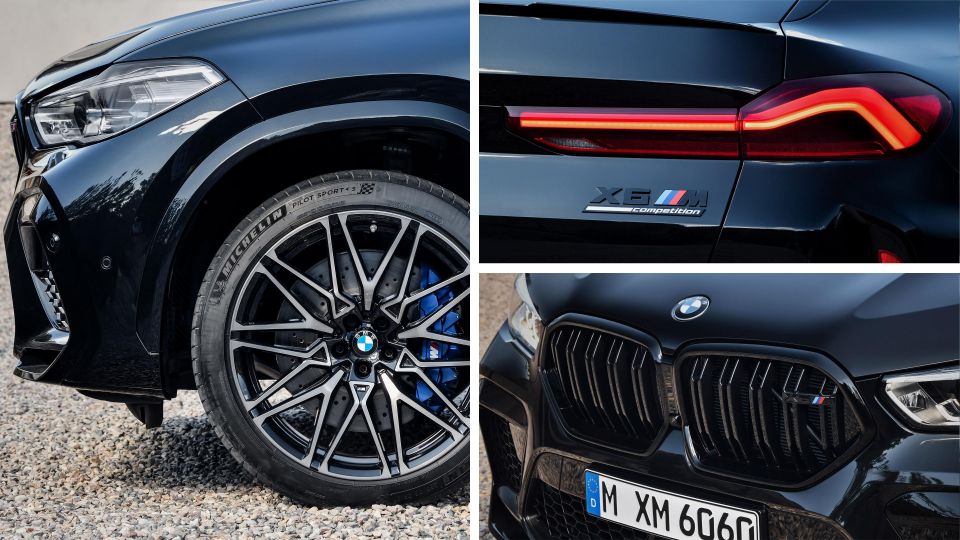
Visually, the X6 M Competition is distinguished by its redesigned front bumper with larger intakes, the gloss black finish of the grille and exterior trim, and the larger diameter wheels (21-inch front, 22-inch rear).
There are also aerodynamic M-style mirror covers, side skirts, quadruple exhaust pipes, a rear diffuser, and of course the M badging all around the car.
The added kit makes the X6 M Competition stand out in a stealthy way from the rest of the X6 range, even compared to non-M cars with the M Sport package. Let’s have a closer look to the faux and functional components.
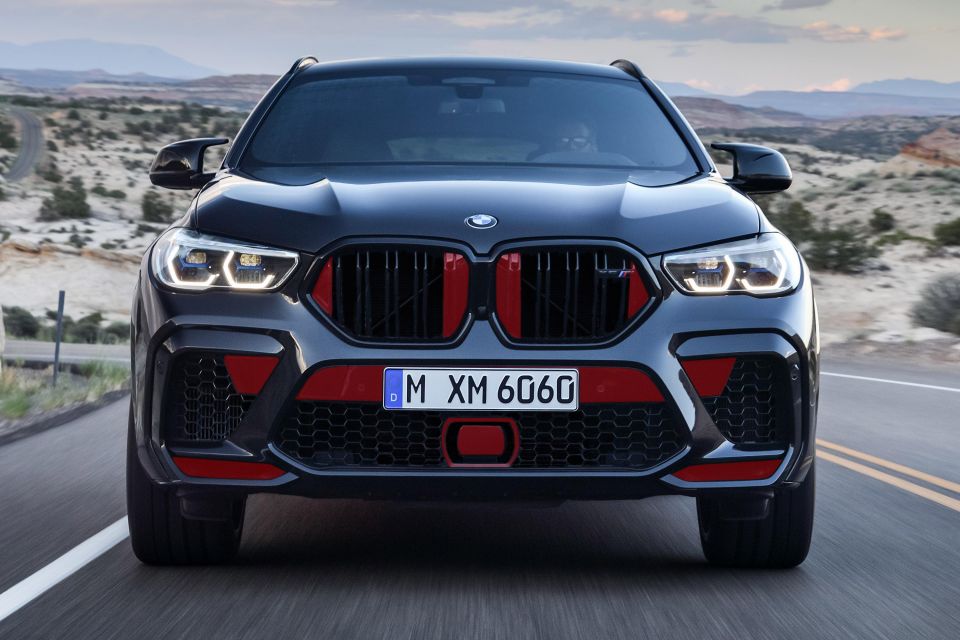
As you can see from the picture above, most of the (large) kidney grille and front bumper air intakes are functional, providing the V8 engine with more than adequate cooling.
To be more specific, the design is 100 per cent legitimate wherever there is a honeycomb pattern.
The only parts that are blocked (highlighted in red) are the splitter intakes and a small portion of the grille separating the “kidneys”. As for the rectangle with rounded edges below the licence plates, this is the area where BMW keeps all of the sensors for its driving assistance systems.
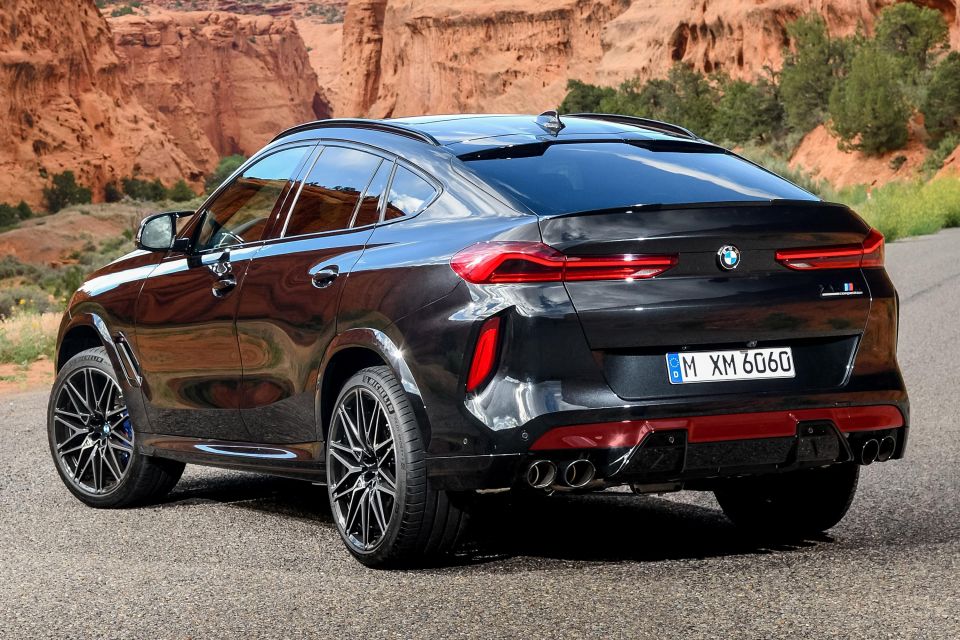
Moving over at the back, the inlets on the huge rear bumper are only for show – as is the case with any non-supercar on sale. This is why BMW’s designers cleverly added the reflectors to make use of this space.
The rear diffuser might not make much sense on a high-riding SUV (even if it has a coupe roofline) but everyone has it nowadays, so the performance version of the X6 couldn’t miss the fun. In a similar manner, the gloss black trim above the tailpipes and diffuser is only there to make it look larger and improve the aesthetics.
As for the roof spoiler and the lip spoiler on the trunk, they are kind of discreet for such a powerful model and we guess that they do help with a little more downforce at high speed.
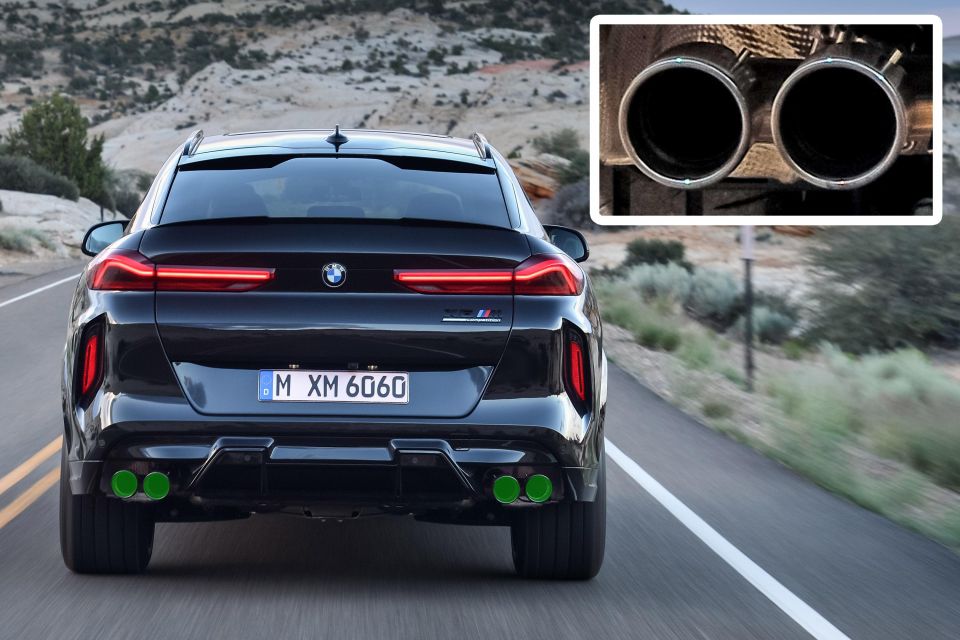
BMW is one the few automakers still offering fully functional exhaust pipes. The X6 M Competition has four round tailpipes in two sets, and as you can see from the zoomed picture they are 100 per cent real.
In contrast, lesser versions of the X6 have dual trapezoidal exhaust pipe trims hiding two or four round pipes inside them (depending on the engine type).
The Bavarian automaker is also known as one of the best when it comes to interior quality, and the X6 M Competition is no exception.
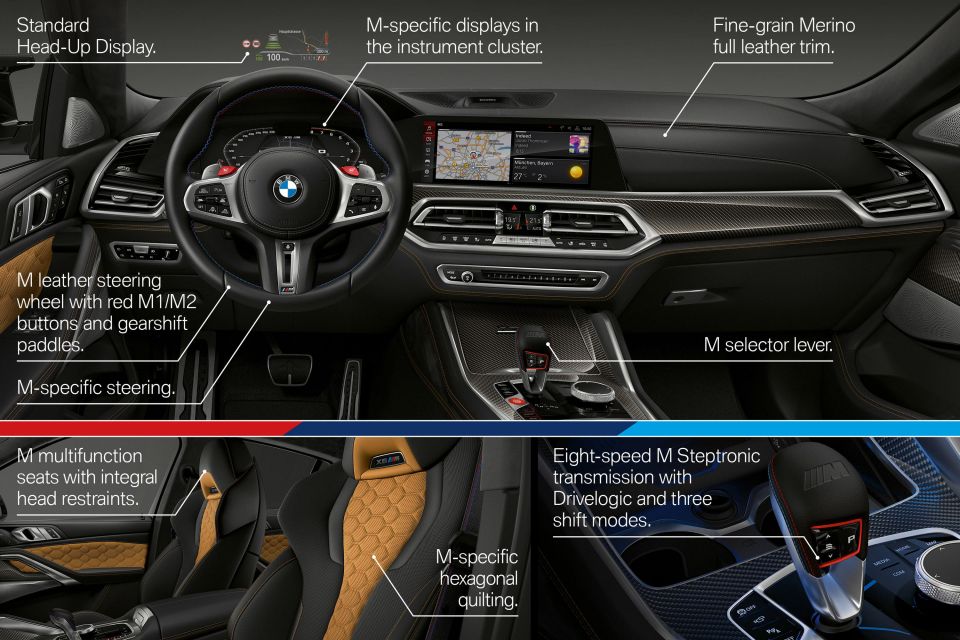
The three-spoke M leather steering wheel with gearshift paddles is the first touchpoint of the car, and hits the spot in terms of its chunky and comfortable grip.
The Merino leather upholstery standard on this model is the most expensive type of leather BMW offers. The dashboard is complemented by large inlays of carbon fibre trim, a material that can also be found on the centre console. Even the lower parts of the dashboard have a soft and premium feel, proving BMW didn’t cut corners.
The bucket seats with integrated head restraints combine a huge range of adjustment with massaging and great lateral support, while the hexagonal quilting in contrasting colour is joined by matching door inserts.
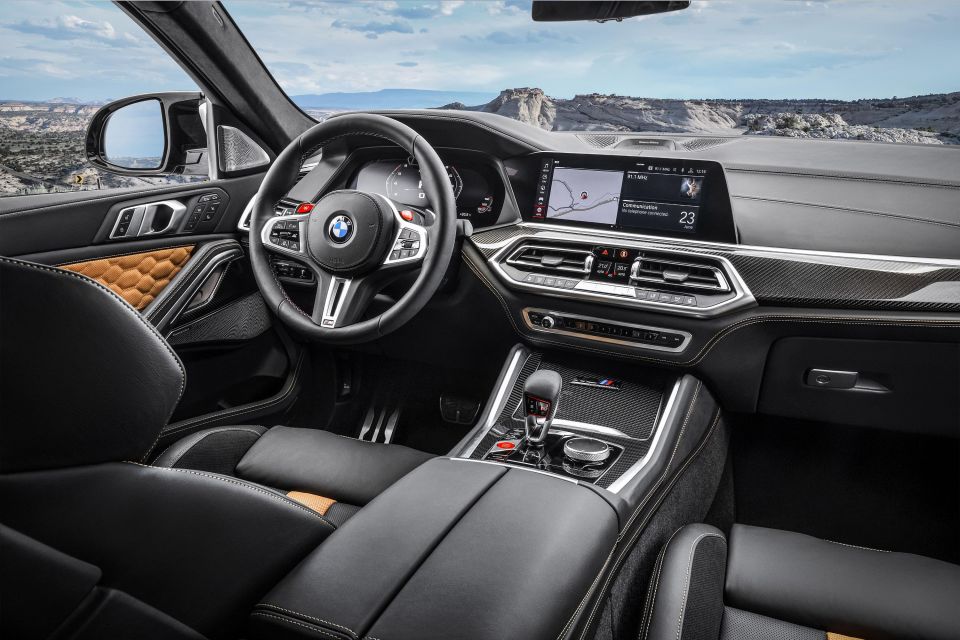
Other unique details for the flagship performance version are the M Steptronic gearshift lever with integrated buttons for the shift modes, the tri-colour M stitching, the M badging, the aluminium pedals, and the illuminated door sills.
Last but not least, there are special graphics on the digital instrument panel and the central touchscreen, even though you will often find yourself restricted to the very useful heads-up display.
Want to know what it’s like to drive? Read our full review here.
Where expert car reviews meet expert car buying – CarExpert gives you trusted advice, personalised service and real savings on your next new car.


Max Davies
6 Days Ago


Josh Nevett
4 Days Ago


Max Davies
4 Days Ago


Max Davies
3 Days Ago


Neil Briscoe
2 Days Ago


Max Davies
1 Day Ago